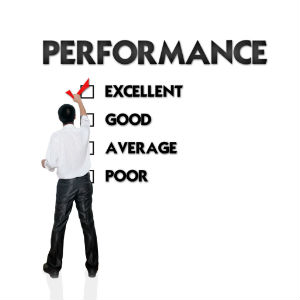Definition of a Performance-Driven Culture
According to a Gartner lexicon, performance-driven culture is a management style that looks at creating a balance between focusing on financial measures, and use of leading performance indicators and weak signals, to drive better business outcomes.
Efficient leaders will seek to create a performance-driven culture, in which your business strategies will adapt with changes in business patterns. This in turn will drive changes in the operational behaviors of managers and employees.
At the core of each successful organization you will find a work culture that strives for better performance every day. Organizations that excel in their domain are nothing but the result of their leaders’ painstaking efforts to inculcate a performance driven culture.
A performance driven culture is deep rooted at all levels in the organization
Employees are rewarded purely on their performance. Their performance goals and targets are clearly defined and communicated to them formally. Employees feel motivated and accountable for their performance and strive to achieve /exceed the targets set for them.
Here performance management is not only an HR responsibility but all departments and managers take ownership of the performance management system. Employees at grass root level take self-initiatives to improve their individual and team performance and are often engaged in a die-hard competition with their peers; and raise the performance bars on a regular basis unless they have reached or exceeded the industry bench-mark.
A bumpy road
Nevertheless, the road to success in performance driven culture is not smooth and easy. Here are some of the challenges that an organization faces while nurturing a performance driven culture:
Challenge 1: Defining performance metrics
The first challenge that organizations face is in clearly defining the performance metrics, also called goals, tasks and measures. The challenge lies in finding the quantifiable parameters for many tasks. The best discoveries can be done through discussions among the top leadership and the managers to decide what parameters/ guidelines should be set at all levels of employees. Key employees should be consulted before setting targets for them and their peers. Once the guidelines are set, a goal setting exercise engaging all employees should be conducted to ensure mutual consent of employees and their managers to set and define performance metrics.
Managers should also ensure that a balance between quality of delivery and the quantity of delivery is maintained. For example: No sale should be done based on extreme promises of delivery or if the delivery efforts makes the sale unprofitable.
Challenge 2: Collection, Reporting and analysis of performance evaluation data

The second challenge for a performance driven culture is managing the huge employee performance data that employees and managers feed into the system. There should be an easy mechanism to provide feedback and rate employee performance.
The data should be well organized and able to report various information like employee achievements, how far they are from their targets, which business unit is performing better and which needs improvement. These inputs will be most valuable to managers and leadership as it will become the source of basis of measuring and improving the performance.
Because your performance data is going to be quite large (even if you are a small company of 50 employees), it is impossible to manage it through paper based (or spreadsheet bases) system. Many organizations use a SaaS based software provided by leading vendors of Performance Management System.
Challenge 3: Identifying The Leaders among Performers

The third challenge of driving a performance based culture in the organization is finding the top performers among the many close matches. Based on the normal reports you can easily categorize your employees in broad categories like Outstanding, Excellent, Good and Average. However, for your succession planning, promotions, rewards, you need to find the leader among the performers.
This a task of detailed analysis. Here is where you need to refer their past performances, co-relating various metrics, writing off the manipulated performances and look for consistency and the values that are best suited for the leaders in your industry. This may require you to have the previous evaluation history at hand. Most performance management systems (software) have this as an inbuilt/default feature.

Challenge 4: Appropriate Reward System
Once identified, you should take immediate steps to reward the performers (before your competition does). Rewards should be appropriate and matching the performance, and to some extent the expectations of performers. It can be in terms of cash bonus, promotions, vacations etc. Sometimes HR can ask the performer to give their preference among a band of chosen awards.
The more satisfying the reward is, the more it will create an environment of competition among peers to perform better than others. A poor reward system, on the other hand, will create an indifference of employees towards your performance management system. Linking performance with pay helps organizations to satisfy the performers and motivate the non-performers.
Challenge 5: Dilemma of training or dropping non-performers

One of the significant reasons why some employees and managers do not welcome performance management system is the fear of exposure of non-performing team members. Unfortunately, in a performance driven culture non-performers have only two options: Improve to a minimum threshold or Exit. A performance driven culture cannot afford to drag the non performers with it. Because non performers can spoil the complete show by setting wrong examples for others and bringing down the average performance of the organization.
Based on the performance evaluation data, you can easily find out the gray areas where the non-performers are lacking. A training and development plan should be chalked out to improve the performance of non-performers. They should be given special attention and time by their immediate supervisors. A suitable training will improve the performance of many of your non-performers.
And those who can’t improve with all possible efforts from organization’s part, must be moved to some other department or be graciously asked to look opportunities outside. As no organization can afford to carry dead wood!
Empxtrack is a comprehensive web-based software available on Demand to help you implement the best HR practices in Performance Management. Offered as pick-and-choose modules, it can meet your existing and future requirements of Performance Management.









Performance evaluation is the essential step to increase the success rate of the work. goal management is the most important thing for which all the companies work hard to achieve. every thing is correlated to success rate wither you take time management, risk management or performance evaluation.
Hi Gireesh,
Am an in the areas of training and performance consultancy. would like to understand your product in detail to explore the value add that it create for the clients.
Thanks
Terrific work! This is the type of information that should be shared around the web. Shame on the search engines for not positioning this post higher!
Hi Deepika,
Please write an email to marketing@empxtrack.com to know more about EmpXtrack.
I want to know more about the EmpXtrack-web based software about the Performance Management System.